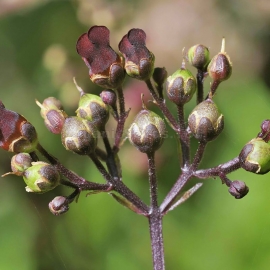 EXCLUSIVE
EXCLUSIVE


Figwort Seeds (Scrophularia Nodosa)
1.14 €
Called "Queen of the Herbs" in Ireland, where its tendency to grow under elder trees imbued it with elder’s magical reputation. In England it became a common treatment for "king’s evil," or scrofula (tuberculosis of the lymphatic glands).
-
Organic Figwort / Scrophularia Nodosa
Called "Queen of the Herbs" in Ireland, where its tendency to grow under elder trees imbued it with elder’s magical reputation. In England it became a common treatment for "king’s evil," or scrofula (tuberculosis of the lymphatic glands).
The leaves and tubers are bitter but edible and in the 1600s the embattled French of the Siege of La Rochelle consumed it in desperation to prevent starvation. Perennial in areas where it is hardy, figwort prefers a damp, even marshy situation, in sun or part shade. Its tall leafy stalks are decorated by small brownish-red flowers when it is in bloom, and the whole plant smells strongly.
It is preyed upon by the figwort weevil, but is otherwise relatively unbothered by pests and diseases. The plant should be harvested and dried when it is in flower; tubers can be taken up in the autumn. It has components associated with anti-inflammatory effect, and is mildly diuretic. It is traditionally used for skin problems, sprains, swellings, inflammation, burns and even gangrene.
In his Herball, or Generale Historie of Plantes (1633), John Gerard advised that a concoction of the root be used on skin ulcers and eruptions. He wrote of figwort that some "do rashly teach that if it be hanged about the necke, or else carried about one, it keepeth a man in health." Fresh leaves can be made into an ointment for sprains, swellings, inflammations, gangrene and burns.
